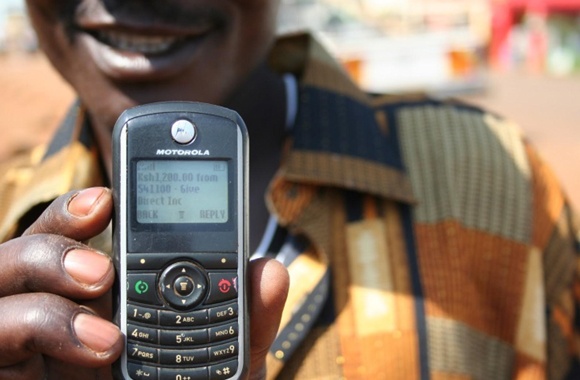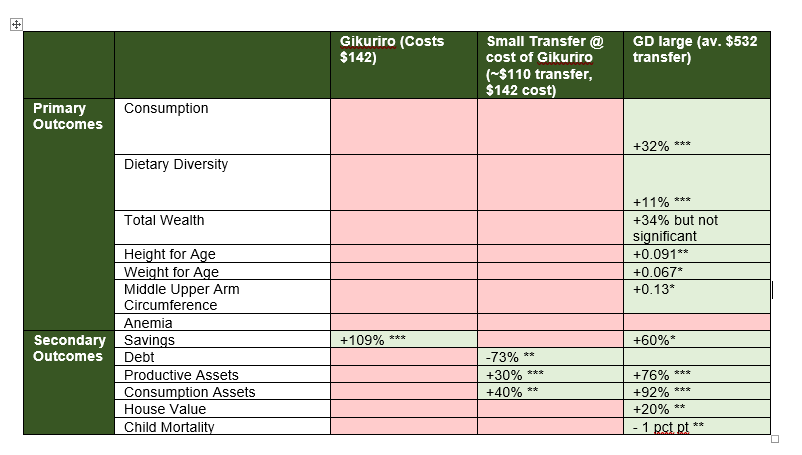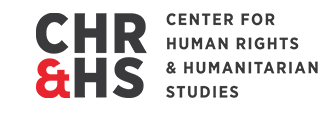
"Cash transfers have arguably the strongest existing evidence base among anti-poverty tools, with dozens of high-quality evaluations of cash transfer programs spanning Africa, Asia, and Latin America."
Han Sheng Chia ('14)
Impacts of Cash Transfers as Humanitarian Aid
Han Sheng Chia (2014) is the Field Director for Disaster Response at GiveDirectly. He led the organization's cash transfer program in Puerto Rico which provided grants to more than 4,700 families affected by Hurricane Maria. Prior to that, he led Data and Analytics at GiveDirectly, focusing on cash programming for the extreme poor in East Africa. In this Q&A piece with The Humanitarian Innovation Initiative's Rakhi Kunda, Han Sheng shares with us his insight on the increasing practice of cash transfers as a form of humanitarian aid.
HI² -- Tell us about your work with GiveDirectly. What methods are you using to send money to people living in poverty? How do you ensure that the money will be put to good, responsible use?
We run a simple but unorthodox model: giving people cash with no strings attached. We do this because a) the growth of mobile money technology enables it, b) the evidence supports it c) and because we believe donors need to ask if we're better equipped to set priorities than those in need. We have committed more than $120M to date, and operate in 6 countries across the African continent.
We aim to find the poorest recipients while using criteria that are simple, fair, and difficult to game. Currently, our default is to locate extremely poor villages and then enroll all households in the village. Once enrolled, the recipient receives transfers from us via a mobile phone (much like Venmo), which they can then use to withdraw hard cash from a local mobile money agent. We follow up with each recipient to ensure they were able to successfully receive the money and to get feedback on the experience. We also work with external academic institutions to conduct randomized control trials on the effectiveness of giving unconditional cash transfers.
The question on “responsible use” presupposes that the extreme poor would blow the money when no restrictions are imposed. The World Bank has conducted a systematic review which demonstrates that the poor generally do not spend it on temptation goods such as tobacco or alcohol. On the flip side, we have seen positive outcomes of cash across multiple factors such as asset accumulation, income, and nutrition. In light of these results that suggest poor families know what they need best, we believe the aid sector should be questioning why “experts” in New York/Geneva/D.C. are better equipped to set priorities for the poor.
HI² -- Expand on GiveDirectly’s recent collaboration with USAID in Rwanda. What did the conjoined study, “Benchmarking a WASH and Nutrition Program to Cash in Rwanda” show? What implications do the results have for the future of GiveDirectly and its cash-granting initiatives in the developing world?
We worked with USAID to conduct a “cash benchmarking” program in Rwanda. Cash benchmarking measures the cost effectiveness of programs a donor is funding against simply giving cash to a family. This is comparable to what index funds do in the market. For example, the Vanguard S&P 500 index fund provides a benchmark for comparing various actively managed funds and companies.
In Rwanda, the benchmarking study evaluated the effectiveness of GiveDirectly’s cash transfers and a program implemented by Catholic Relief Services called Gikuriro that taught good nutrition and hygiene habits, distributed small livestock, seeds, and promoted the creation of small savings groups. Two cash transfer sizes were compared—one “small” transfer at the size of what Gikuriro would cost, and one “large” transfer, approximately four times the size of Gikuriro.

From the results table, we can take away the following:
- Large, $532 cash transfers have positive impacts on both economic outcomes (assets, consumption, savings) and health outcomes targeted by USAID (dietary diversity, height-for-age, weight-for-age, middle upper arm circumference, child mortality).
- Gikuriro, a traditional integrated nutrition and water, sanitation, and hygiene (WASH) activity which cost ~$140 per household, increased savings, but did not improve other economic or health outcomes
- Smaller cash transfers matched to the $140 cost of Gikuriro reduced debt, and increased both productive assets and consumption assets.
We think USAID and Catholic Relief Services are showing real leadership by prioritizing measurement and transparency. This kind of project requires those in charge of programming to ask questions that are not often asked (i.e. How effective is X or Y? How much does X or Y actually cost to deliver?). We hope more people are convinced by the value of this exercise - so far, we’ve been excited to see more USAID missions sign on to replicate what we did in Rwanda.
HI² -- In your opinion, are cash-transfers a sustainable type of humanitarian aid? Can you discuss instances in which they have proven to successfully alleviate poverty?
Direct cash transfers are gaining momentum as an alternative to the status quo. Deemed “crazy” in the early days of implementation, cash has now become a staple of social programming and is being supported by former Secretary General of the UN Ban Ki Moon, head of the World Bank Jim Kim, and other leaders.
Cash transfers have arguably the strongest existing evidence base among anti-poverty tools, with dozens of high-quality evaluations of cash transfer programs spanning Africa, Asia, and Latin America. These studies include many randomized controlled trials (RCTs) and also include studies that measured impacts 4–5 years out, evidence which exists for hardly any other interventions. Despite the overwhelming evidence, cash transfers make up a disproportionately small portion of aid (only 2% of development aid, and 10% of humanitarian aid). We believe benchmarking programs like the one we conducted in Rwanda will continue to grow the movement and encourage donors to ask “why not cash?”
Usually when the word "sustainable" is applied to charity, it means that a gift "keeps on giving" and that donors need not continue to make gifts to the same recipient. Since many GiveDirectly grant recipients use some or all of the money to invest in small enterprises, many of GiveDirectly's grants are "sustainable." Indeed, a study of unconditional cash transfers in Mexico found that household incomes increased by between 1.5 and 2.6 times the amount of the transfers due to the returns from increased investment. There is some early evidence from research in Uganda suggesting that non recipients of cash transfers may “catch up” with recipients after almost a decade. We continue to explore research questions on how long the impacts of different transfer designs persist, and for whom.
For more information please visit www.givedirectly.org

